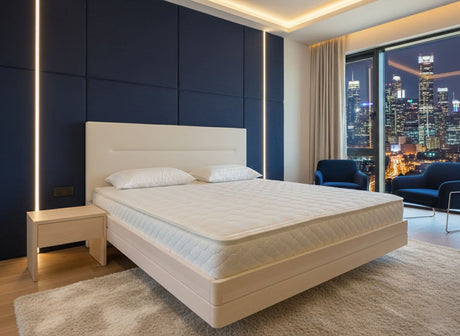This is a follow-up to our post 'We Believe in Restorative Sleep.'
There is a conceptual catastrophe in the world of retail mattress sales and promotion. Colloquial wisdom holds that firmer mattresses are more supportive and that softer mattresses give superior pressure relief. Indeed, by sheer intellectual default many salespeople help to create or perpetuate this mistaken framework in the very language we use to present mattresses. EG: ‘This pillowtop mattress has a firm coil system for support, and the plush pillowtop layers provide comfort’. This sets up a dichotomy that comfort and support are opposites, with the consequence being that choosing the correct mattress is about deciding how much comfort to sacrifice for support or vice versa.
This dichotomy is false. There is no such thing as a comfortable mattress that is unsupportive. This claim can only be adhered to if one evades the feeling they have when they wake up after a night on a ‘comfortable, but unsupportive mattress’, we hold that this phrase is a contradiction in terms.
There is one basic material property that unites the concepts of comfort and support, to show us that these are merely different aspects of an inseparable whole. The material property that we need in a broad sense, which helps us to achieve optimal posture and comfort, is elasticity. Highly elastic materials, all else being equal, give the producers of mattresses much greater control over comfort and support. A high degree of elasticity ensures not only that the materials used can be sufficiently flexible but also resilient enough to provide a good support factor. This expands the range of appropriate firmness choices one can make without risking poor posture and comfort.
A properly supportive mattress needs to be flexible enough to conform to the complex shape of the human body. It must provide support for as much of our body as possible. A supportive mattress does not simply ‘sag’ and allow our centre of gravity (typically pelvis and hips) to sink excessively. The mattress needs sufficient resilience (support factor) to resist this sagging in order to achieve optimal posture. The alleged pressure relief of ‘soft’ mattresses would be wiped out by inadequate resilience, creating postural distortions as more body weight from other areas of our body now angles towards this centre of gravity, increasing pressure.
Using the most elastic materials available to us decreases the potential of such problems to occur, not only in new mattresses but also in the context of them being broken in from years of use.
If you're starting your journey, we highly recommend reading about our exceptionally elastic Berkeley Ergonomics Cairo, Berkeley Ergonomics Copenhagen, and Harrison Spinks Nesfield mattresses.
You may also read more about The Elastic Bed Principle in our Spring Mattress Buying Guide.

















